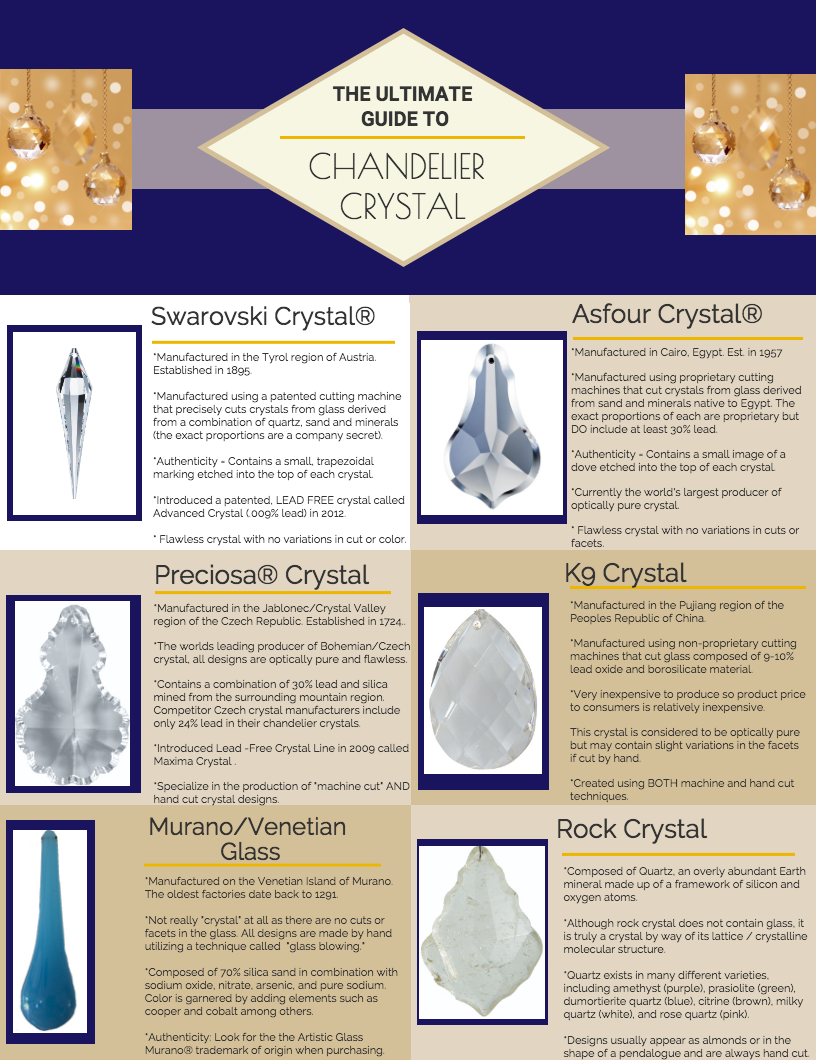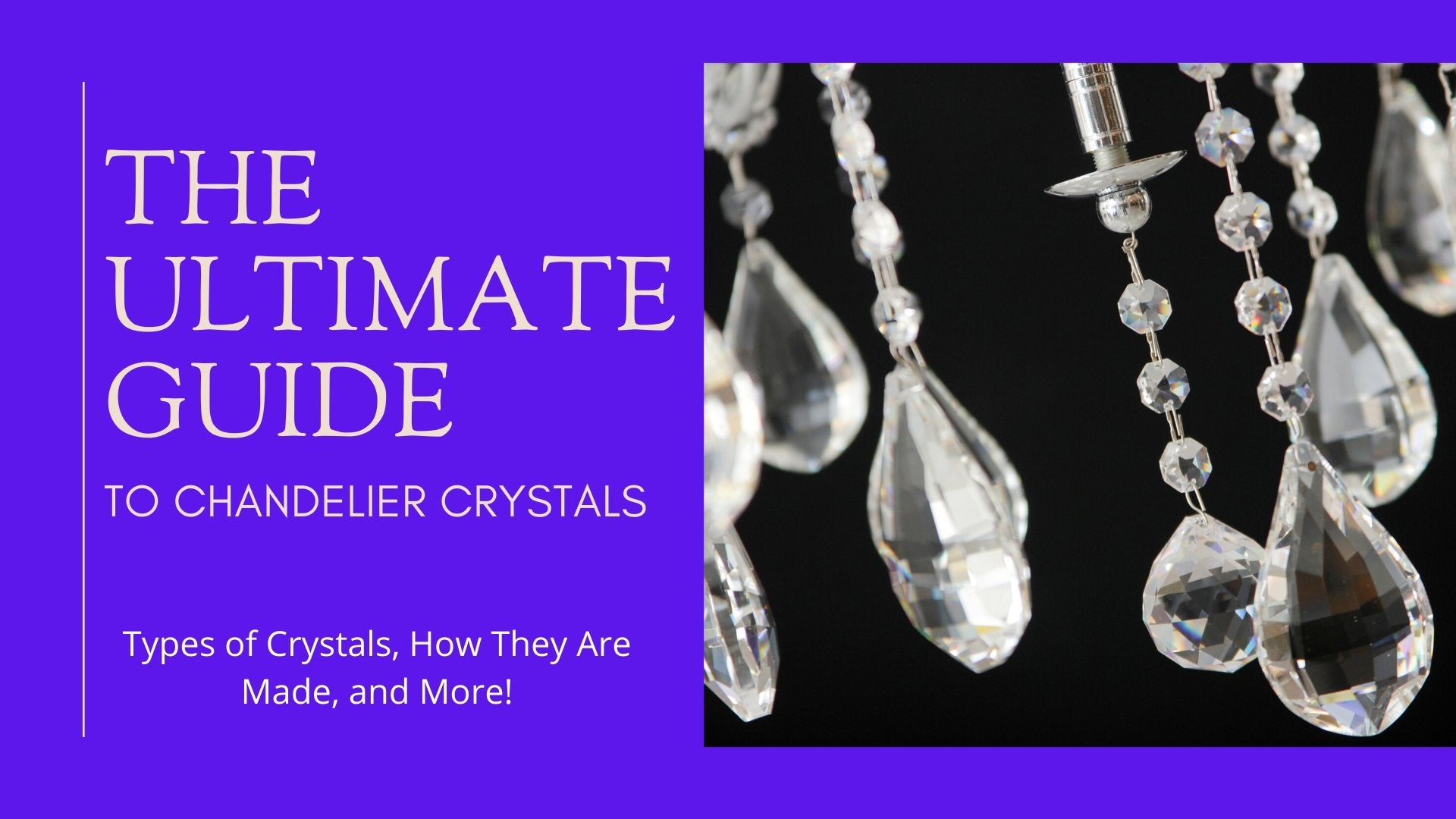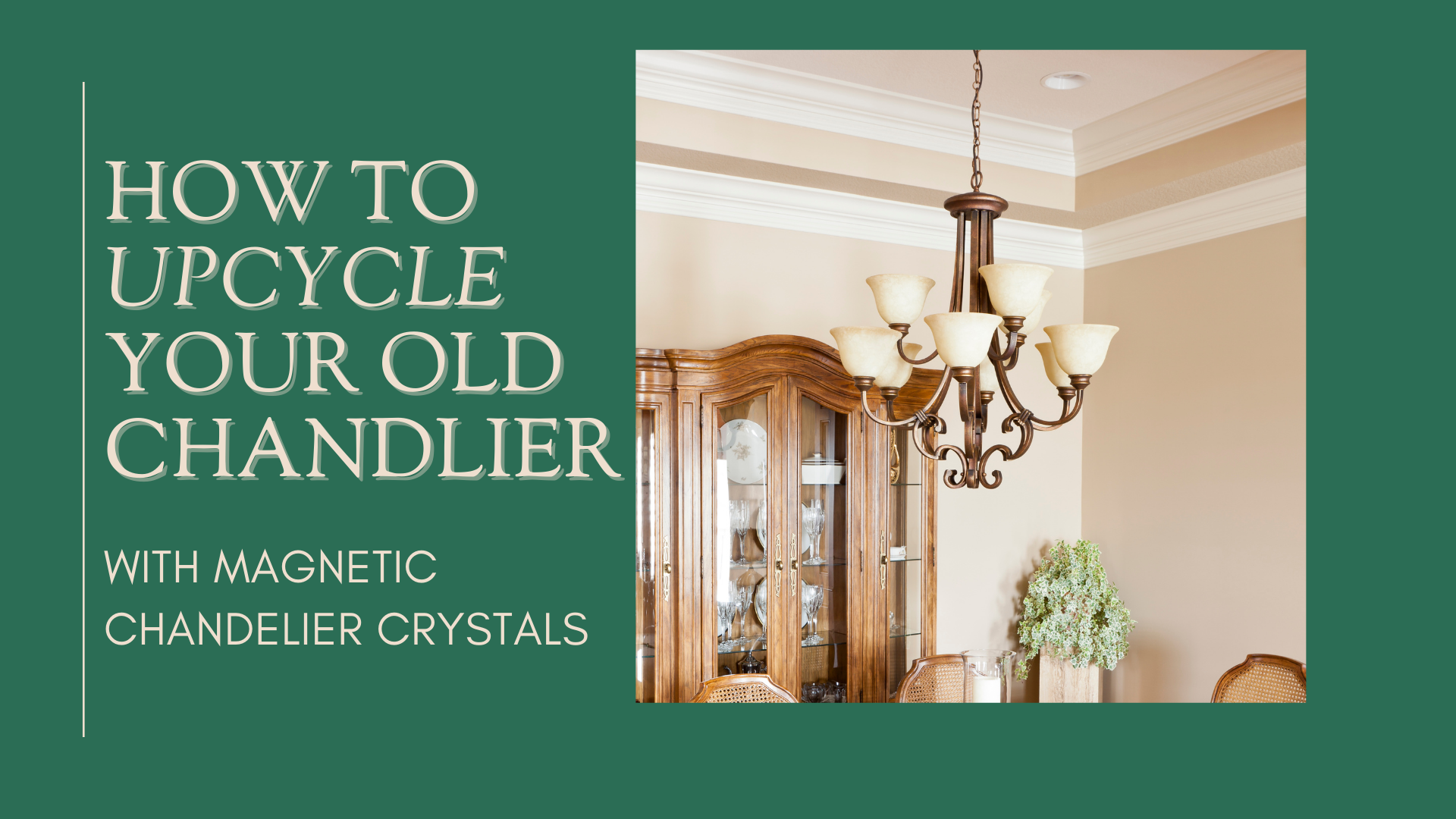Have you ever wondered what the best crystal for chandeliers may be? Are you looking for replacement chandelier crystals but do not know the type or the grade of crystal that you need? Or how do you tell the difference between a glass and a crystal chandelier? MagTrim® has those questions answered and more in this ultimate guide to understanding crystal vs glass replacement chandelier crystals.
Crystal vs Glass - What is the Difference?
Crystal and glass are essentially composed of the same material: silica (specifically, silicon dioxide ). Crystal is simply glass that is manipulated through the addition of certain compounds, such as lead II oxide, barium oxide, zinc oxide or potassium oxide . These compounds are added into the glass in order to ensure high quality light diffraction (in other words, these compounds make the glass sparkle)!
The compound that gives crystal the most sparkle is lead oxide. The addition of lead oxide to glass raises its refractive index, thus causing a greater "prism effect. Precision and highly detailed glass cutting machines exploit these properties to create a brilliant, sparkling effect as each cut and facet reflects and transmits light through the object.
The meaning of crystal versus glass changes according to the country. The word "crystal" means, in most of the western world, the presence of lead ( lead oxide). In the European Union, only glass products containing at least 24% of lead oxide may be referred to as "lead crystal". Products with less lead oxide, or glass products with other metal oxides used in place of lead oxide, must be labeled as "crystalline glass."
In the United States, it is the opposite. Glass is defined as "crystal" if it contains only 1% lead oxide.
How are chandelier crystals actually manufactured?
A chandelier crystal can be manufactured in one of three ways: by machine, by hand, or by pressing molten glass into a mold.Chandelier crystals produced by machine, or "machine cut" crystals, are created when the surface of a molded crystal shape is "cut" in various places on the surface AND on the edges to create a lattice work of facets.
Chandelier crystals produced by hand, or "hand cut" crystals, are produced when a block or molded shape of crystal is held by hand and "cut" on an iron wheel and then on a sandstone wheel. Each crystal is then polished on a wooden wheel with marble dust.
Chandelier crystals created by pressing molten (liquid) glass into a mold are known as "hand pressed." These chandelier crystals are created when a plaster, cast iron or steel mold is filled with glass in its liquid form and then "pressed" by the use of a plunger and allowed to cool.

Top Crystal Manufacturers of the World
1. Swarovski®
Founded in 1895 by Daniel Swarovski, Armand Kosman, and Franz Weis, Swarovski began when its primary founder, Daniel Swarovski, patented an electric cutting machine that facilitated the production of lead crystal glass through hydroelectricity. Based in the Tyroll region of the Austrian Alps ( just outside of Innsburg), Swarovski® chandelier crystals are considered the finest in the world. Optically pure and free of flaws, the crystal is perfect in every way. Swarovski® uses the term "Perfect Geometry" to explain the facet designs that are expertly machine cut into the surface of the crystal. All the crystals are treated with an invisible coating, which eliminates dust attraction and makes it easier to clean. Each crystal of 12mm in size or larger is indelibly etched with a trapezoidal marking to signify that it is genuine Swarovski® crystal.
Swarovski offers more than 500 chandelier crystal designs ranging from classic to contemporary shapes, including highly complex cuts.
The Swarovski STRASS® lighting assortment consists of crystal designs containing 30% lead oxide.
The Advanced Crystal® lighting assortment, introduced in 2012, consists of lead free crystal designs.

2. Asfour®
Founded in 1957 in Cairo, Egypt, Asfour® is currently the largest producer of crystal products in the world. Asfour's proprietary crystal cutting machines and additional technology allow for the creation of flawless, precision cut chandelier crystal. Asfour® currently still employs the use of 30% lead oxide in its crystal designs in order to ensure maximum light refraction and sparkle. This crystal brand is usually much less expensive than it's main competitor, Swarovski®. Look for the image of a small dove to be etched into the top of all Asfour® chandelier crystal designs larger than 12 mm.

3. Preciosa®
Founded in 1724 in Mšeno nad Nisou, now a suburb of Jablonec in the Czech Republic, Preciosa ® is the the leading producer of "Bohemian" crystal in the world (Bohemian crystal gets its name from the region of the world in which it is produced). Preciosa® specializes in both pressed glass, machine-cut, and hand-cut crystal designs. In addition, all crystal designs feature a lead content of 30%. In 2009, Preciosa® introduced Maxima Crystal®, its lead-free crystal line. As of 2018, this 15-facet cut, lead free crystal is only available in rhinestone designs. The authenticity of Preciosa® crystal can be identified on packaging only as there are no logos etched into the designs themselves.

4. K9 Crystal
5. Murano Glass




